Wallonia
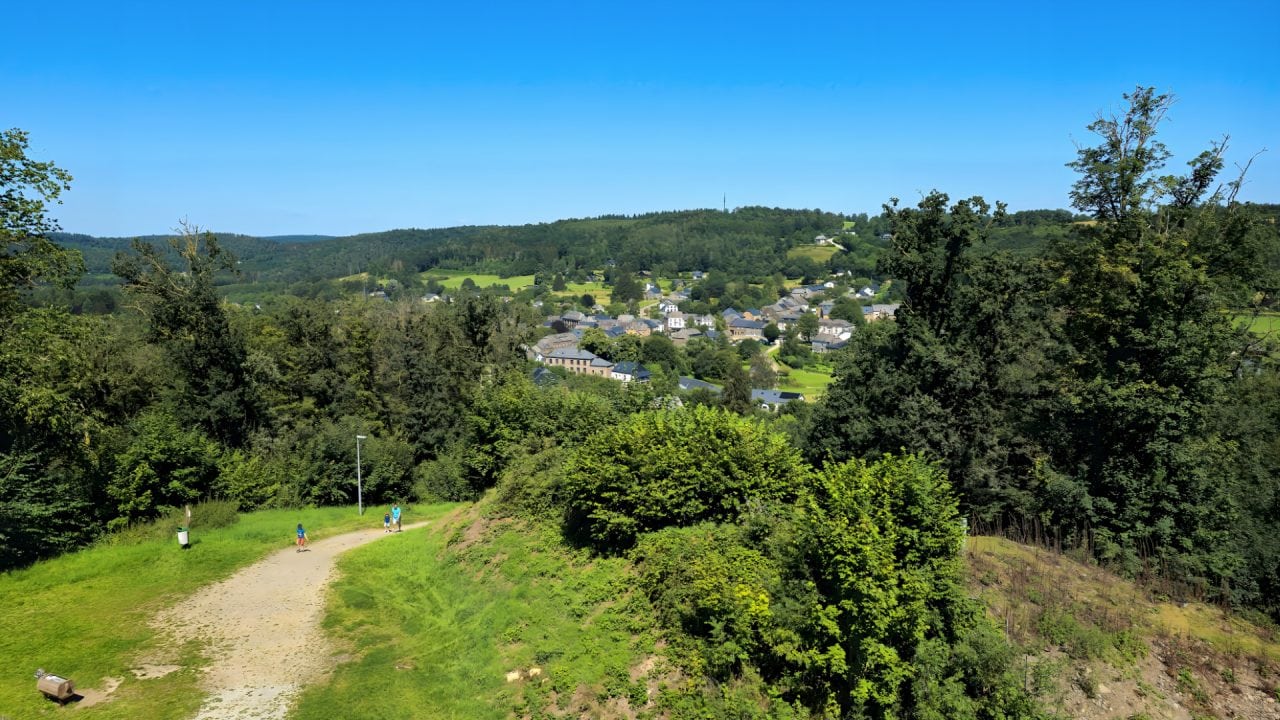
Mike and I recently spent a month exploring the Wallonia region of Belgium (with a few side trips). Belgium is divided into two main regions—Flanders and Wallonia—along with the Brussels-Capital Region. Flanders, in the north, is primarily Dutch-speaking, while Wallonia, in the south, is French-speaking.
The picture above is of the day we arrived in Wallonia. It was early in the day, and we decided to go for a relaxing bike ride in the local area. Our campsite was tucked behind the dark trees on the right side of the picture. As we cycled, we spotted a sign for the local fortress, a well-known attraction. The path became increasingly steep, and eventually, we had to park our electric bikes and continue on foot. I should mention that it was an extremely hot day in early August, and the whole way up, I couldn’t stop thinking, “We’re seniors now and I am not in good shape; we really shouldn’t be doing this”. We did make it up to the ruins and walked on top of parts of the original walls. The views were great. So much for our relaxing ride.
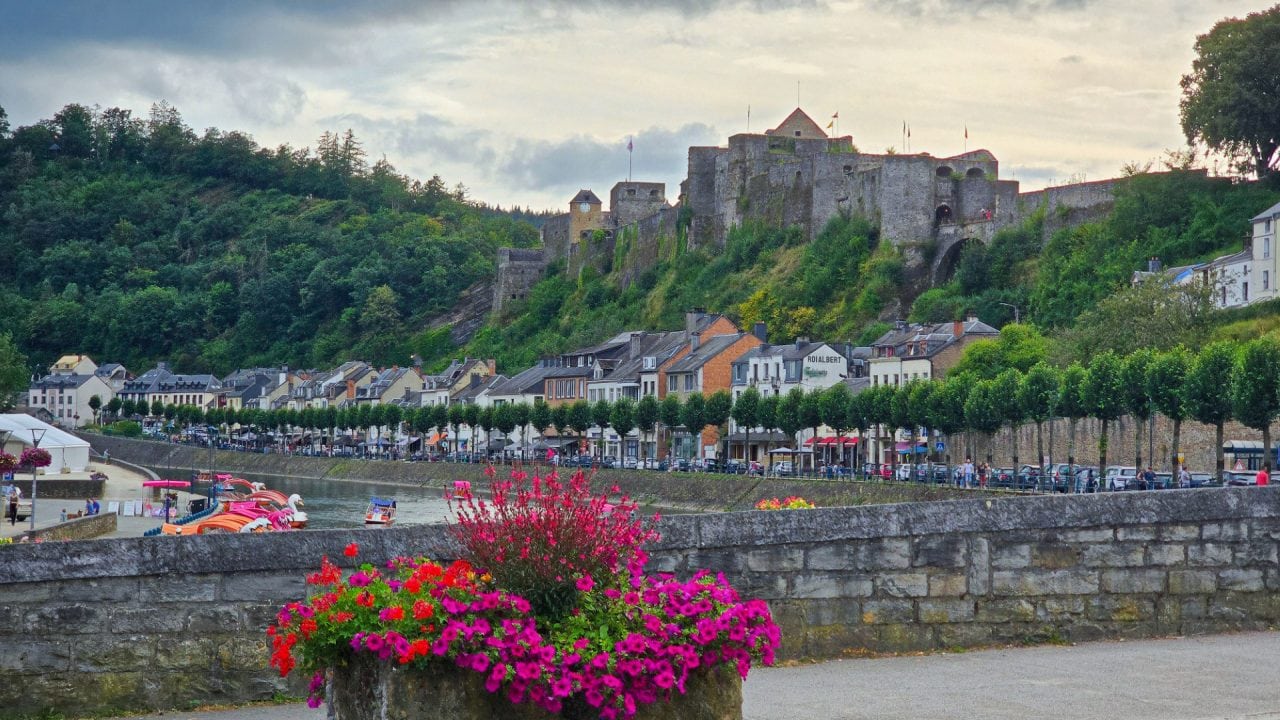
Our first weekend in Wallonia Mike and I attended a medieval festival in the town of Bouillon. We drove to the town and decided to use our bikes instead of just walking. The bikes allow us to walk and/or ride. Given the heat of the day and the distance around the town it was a great decision. Even with our bikes we gave up on the fort in the picture which was too bad because there was a lot going happening at the fort during the medieval festival. Wandering around, Mike was quite intrigued by the lathe they had, replicating one from long before electricity. I enjoyed learning how chainmail armor was constructed—a difficult and slow process. At lunch we ordered mussels that we expected in a tomato based marinara sauce but instead got ones “au naturel”. Not what we wanted, but the restaurant did fix it for us.
Mike and I often think that we understand French better than we actually do, so we don’t rely on Google Translate as much as we might in other countries—something we occasionally regret. A few days after the fair we ordered a penne to share between us for lunch and ended up with two servings of cheese croquettes. Later my red wine, turned into white wine. In the first couple of weeks we had three meals that weren’t at all what we were expecting, though we did enjoy them. We also got into some light-hearted trouble at one restaurant for ordering “French” fries. They insisted that they were Belgian fries, as Belgium is where french fries originally came from.
Another issue we encountered was the abundance of towns with the same name in France and Belgium. I’d spot a place on the map that sounded intriguing, only to find out that the information I had researched was for the French town. Mike also had trouble with his GPS. His searches were constantly finding places in Luxembourg when we were looking for towns in Belgium. We eventually learned that the Luxembourg we were seeing on the Garmin was actually the region we were in in Belgium, not the country of Luxembourg.
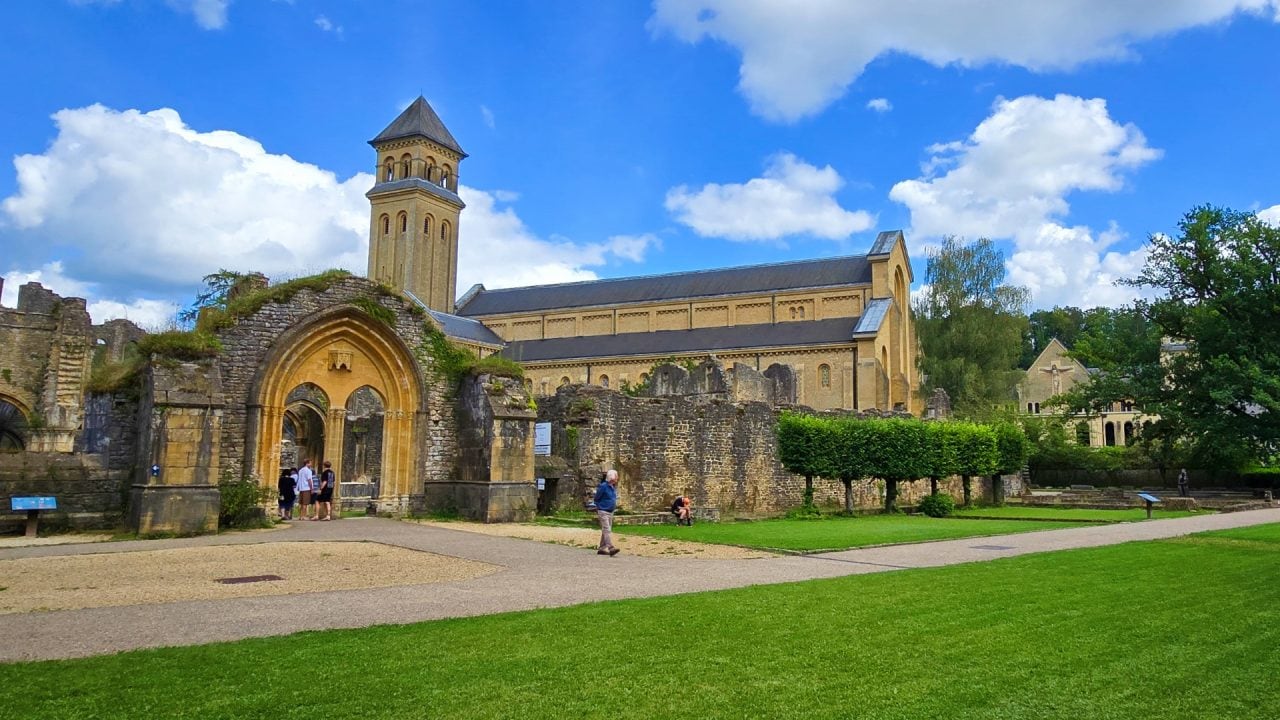
Mike and I drove to visit the Abbaye d’Orval or Orval Abbey, which is still an active monastery today. We discovered that the abbey is home to a world-renowned brewery, which produces the famous Orval beer. This Trappist beer is said to be highly regarded by beer connoisseurs and known for its unique flavor and high alcohol content. I found this a little humorous. The abbey is also big into cheese production. Over time many of the original buildings were destroyed, particularly during the French Revolution when the abbey was looted and burned in 1793. The abbey was reestablished in 1926 when the current buildings were constructed. What I found quite interesting was that the ruins of the original abbey were left in place and the new buildings were built in an L-shape around the ruins. The original abbey was not small, so that tells you something about the size of the new buildings.
People always assume that due to our RV size we must have major problems with the roads and the campgrounds in Europe. It is true that we have some problems and avoid certain areas, but not as many as people think. The day we tried to leave our first campground in Belgium turned out to be just such a problem. We are 3.9 meters high and on our way in we noticed that the bridges over the roads into town were all only 3.5 meters high. Luckily there was a smaller road without a bridge, that led to the campground. On the day we were leaving, the town had closed this road for a summer festival. It was packed with people and kiosks, and we couldn’t get out of town. We used the car to check out various trails which looked slightly possible on Google Maps but nearly all proved unsuitable due to low overhanging tree branches, steep inclines, or dead ends. We eventually found a private track through the side of a field which was not really appropriate for our RV but that Mike managed to use to get our motorhome out of this town. I followed in the car watching the RV tilt back on forth on the track. It was most disconcerting.
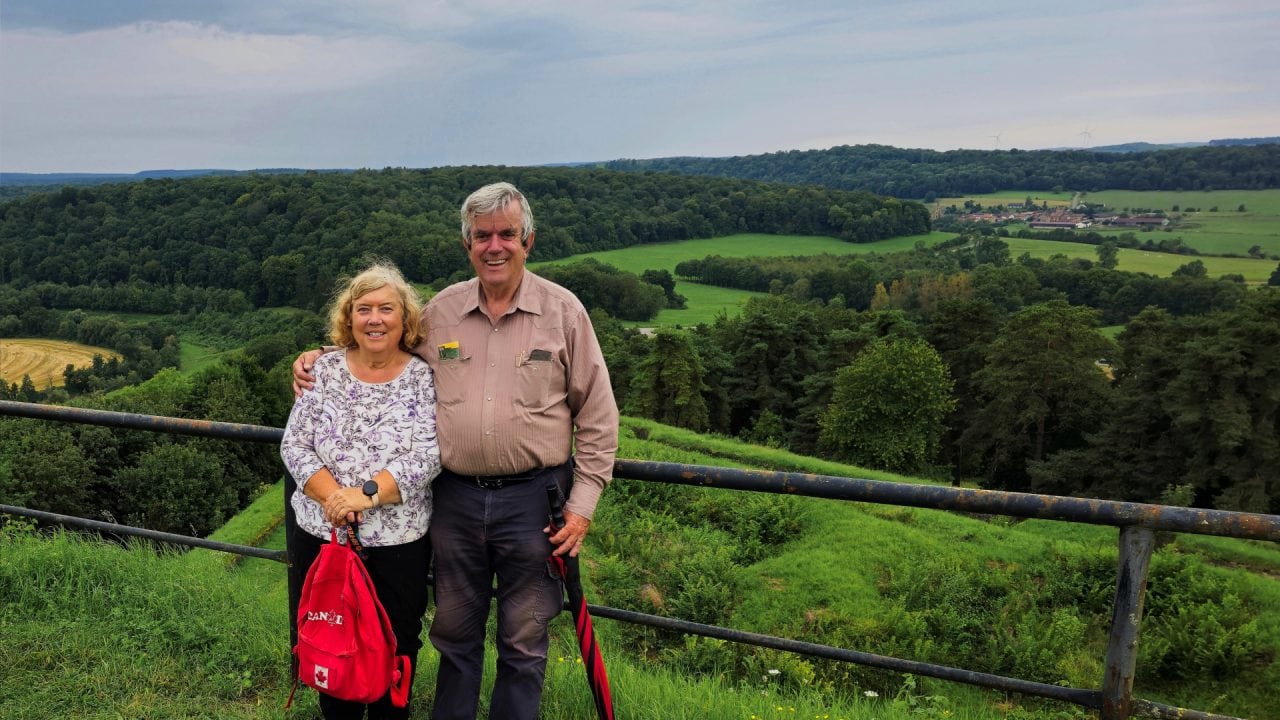
Some of the places Mike and I visit are chosen because we have audio tours for them. This was the case with the Abbaye d’Orval and the Montmédy Citadel, which happened to be just across the border in France. The day before this photo was taken, the temperature was 35°C plus humidity. Thankfully, the day of the photo, it was a much more comfortable 21°C—I wouldn’t have managed the tour in the previous day’s heat. We had two audio tours of Montmédy: one of the lower town and one of the Citadel. We planned to eat and then start exploring the lower town. By the time we arrived, it was 1:45 PM, and all the restaurants had already stopped serving lunch—we were back in France. One restaurant suggested that we might find something to eat up at the Citadel, so we headed there and managed to get lunch and toured the Citadel grounds instead. The Citadel was mostly overgrown, but large sections were still well-preserved. The photo above shows Mike and me standing on the overgrown walls, with beautiful views of the countryside.
Mike and I cycled to the town of Huy in Belgium, where we visited the Church of Notre-Dame (Our Lady) and Saint-Domitien. In earlier posts, we discussed how stained glass windows were used to tell stories before books became widely available. This church had each of the Stations of the Cross depicted in really lovely stained glass windows.
As we travel around Europe, Mike and I have noticed that poor road conditions often seem to correlate with a country’s economic status. This doesn’t seem to be the case in Belgium. It’s easy to tell when you’ve crossed the border from Wallonia, Belgium, into France, Luxembourg, or Germany—the roads suddenly become much smoother, and it’s a clear sign that you’ve entered a different country, even without a visible border. The locals even joke about it. Although the bike paths in Wallonia are often in poor shape, there are a lot of them, which is great. We haven’t cycled in the Netherlands yet, but I have to say that, out of all the places we’ve been, the drivers in Belgium are, by far, the most careful and respectful of cyclists.
On another day of cycling, we came across a parade of old tractors driving down a country road. We must have seen more than 50 tractors, and they just kept coming. As we cycled along, with tractors of every color passing us, Mike was having a great time pointing out the ones he recognized (most), including many he had driven himself. Everyone was waving to us, and some of the tractors were pulling wagons full of children. One guy, sitting on a fender, even tried to pass Mike a bottle of beer. It was great to see as we passed by.
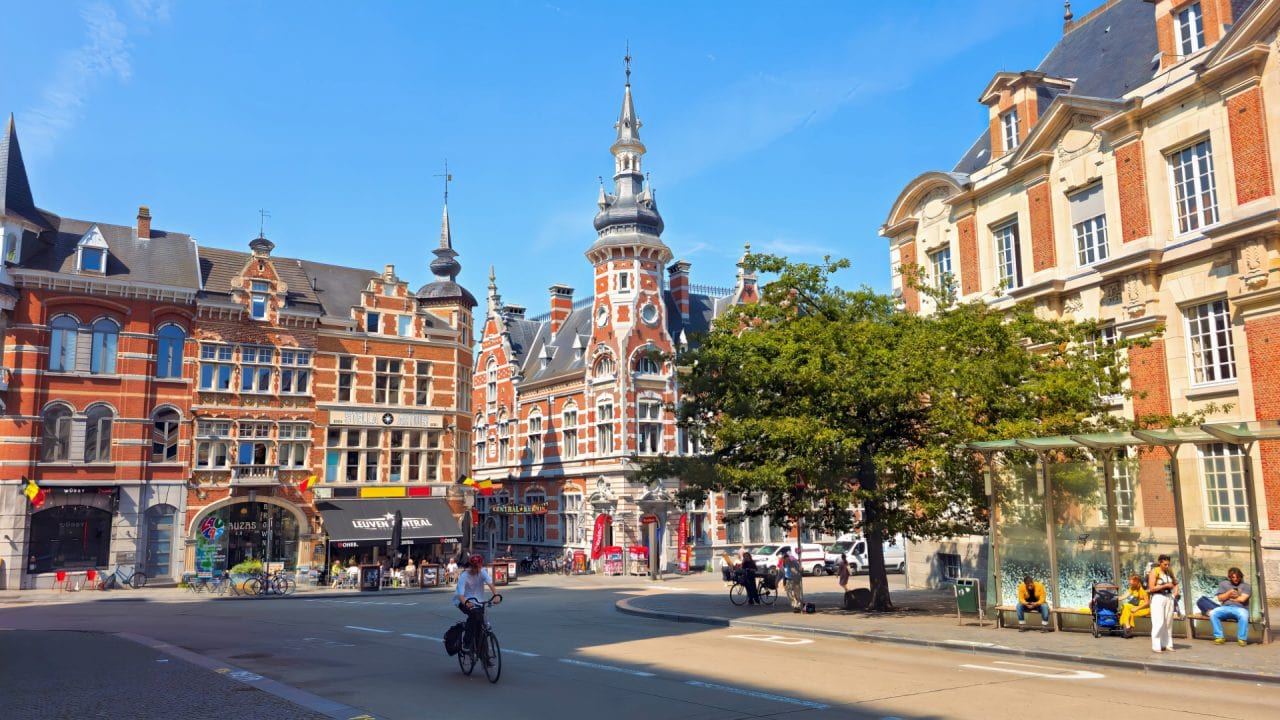
Leuven was another town we cycled to and explored using an audio tour. I’ve discovered that I sometimes over plan our days. On particularly warm days, cycling 40 km and then slowly walking 3-5 km while pausing frequently to listen to our headsets can become quite exhausting. Slow walking tires Mike out more than anything.
One day when I wasn’t feeling well, Mike decided to cycle on his own to nearby Waterloo. The 1815 Battle of Waterloo marked the end of the Napoleonic Wars with a decisive defeat for Napoleon.
At Waterloo, Mike visited the Lion’s Mound, which was constructed at the spot where the Prince of Orange (William II of the Netherlands) was wounded. The mound is topped with a lion statue, symbolizing the bravery and strength of the Allied forces. Mike climbed the 43 meters (141 feet) to the top, an effort he might have skipped if I had been there.
The round building in the picture houses a 360-degree painting depicting the dramatic events of the Battle of Waterloo. Mike found it to be quite impressive. We saw a similar setup in Wrocław, Poland, which was also excellent.
Mike and I cycled to visit Liège. As we rode through the city, Mike kept pointing out familiar places, claiming we had been there before. I’m embarrassed to admit that he was right, but I didn’t recognize a single spot. He did say that it was almost completely under construction on our previous visit. One notable feature of Liège is the steep stairway of 374 steps, built in 1881 to provide soldiers with a direct route from the city center to the Citadel, avoiding the risk of ambush in the narrow streets. We didn’t climb the steps last time and we didn’t climb them this time.
When we think of the capital of the EU, Brussels usually comes to mind. It’s where most of the EU workers are based, where many parliamentary committee meetings are held, and where a significant amount of work is done. However, according to the original EU treaties, the European Parliament is required to hold 12 full sessions each year in Strasbourg, France. Each session typically lasts 4 days. This is to ensure that Strasbourg remains the official seat of the European Parliament. There has been considerable debate about the practice of moving back and forth between Brussels and Strasbourg but any change to the capital requires unanimity among EU member states, which is unlikely to happen.
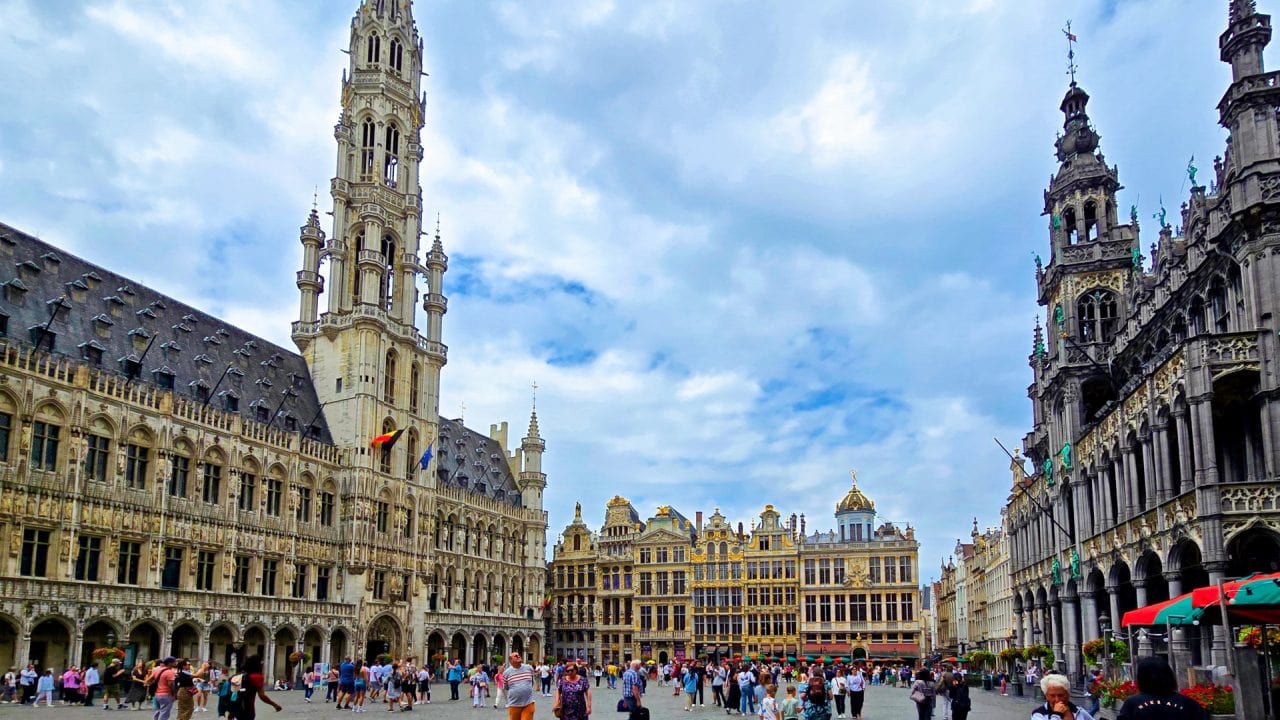
You can’t visit Brussels without returning to the Grand-Place. On the left side of the picture above is the gorgeous Gothic Town Hall, and across from it is the King’s House, which now houses the City Museum.
The square features buildings representing various guilds. The building along the back on the far right with the dome is known as the Maison des Boulangers (House of the Bakers) or Le Roi d’Espagne (“The King of Spain”). I found the six statues along the top very interesting. These statues depict the entire bread-making process, from grinding the grain and kneading the dough to delivery. However, I also came across other sources online claiming these six statues represent the seven deadly sins or the seven Dutch provinces that revolted against Spanish rule in the 16th century. It seems you can’t always trust everything you read these days.
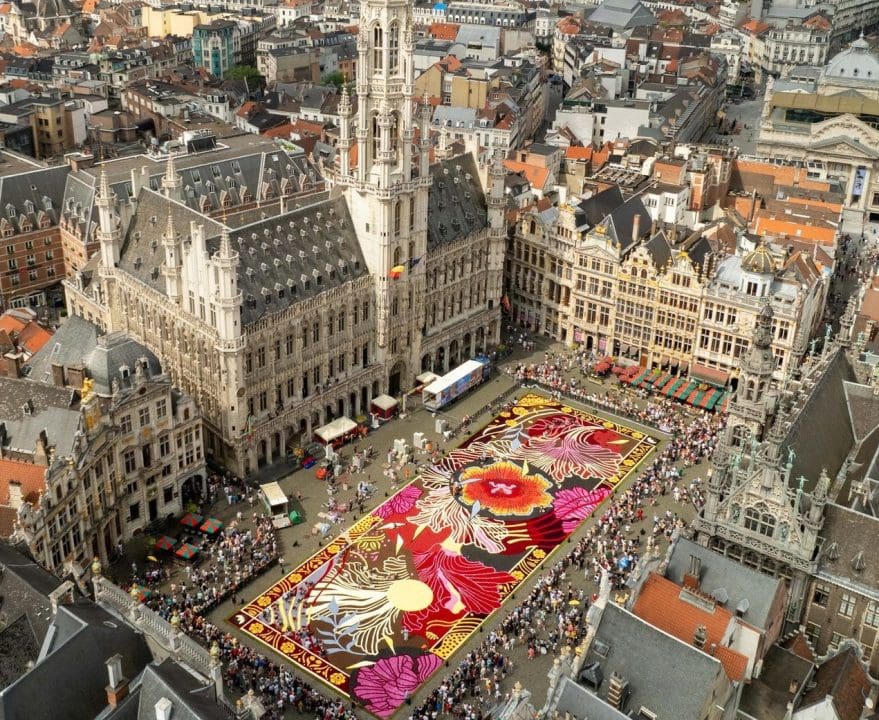
I am really, really disappointed that we didn’t make it to Brussels just a few days earlier. From September 15-18, the city held its Flower Carpet event, and Mike and I arrived on September 20—what a shame! For four days, the Grand-Place was transformed into a stunning display with a 70m x 24m (229ft x 79ft) “rug” made entirely of flowers. In addition to this, 17 stages create a trail leading to the Grand-Place. It all starts with the Magic Dragon, which Mike and I did see. This event occurs every two years, having been a tradition in Brussels since 1971 and specifically on the Grand-Place since 1986. Hundreds of thousands of cut flowers are reserved well in advance. A full-size drawing is prepared on a massive organic cotton canvas, which is then laid out on the cobblestones of the Grand-Place. Volunteers then assemble the entire rug in less than six hours, unbelievable.
Now, Mike and I are heading to cycle through the Netherlands and hopefully catch up with some of his family. We’re planning to stay at a campground called Klein Canada (Little Canada). It might not be the most convenient, and we hope it won’t be too hot since there isn’t enough electricity to run our air conditioners, but we really couldn’t resist.

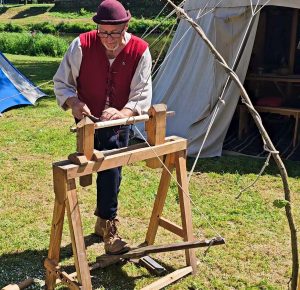
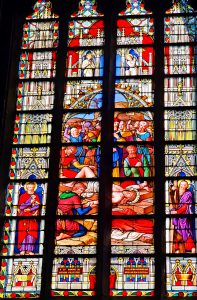
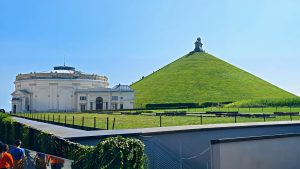
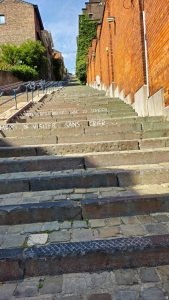
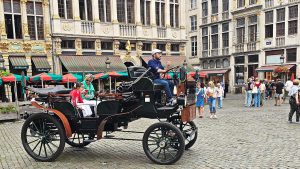
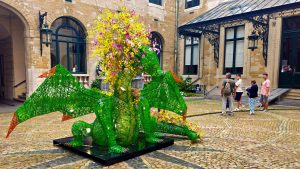
Leave a Reply